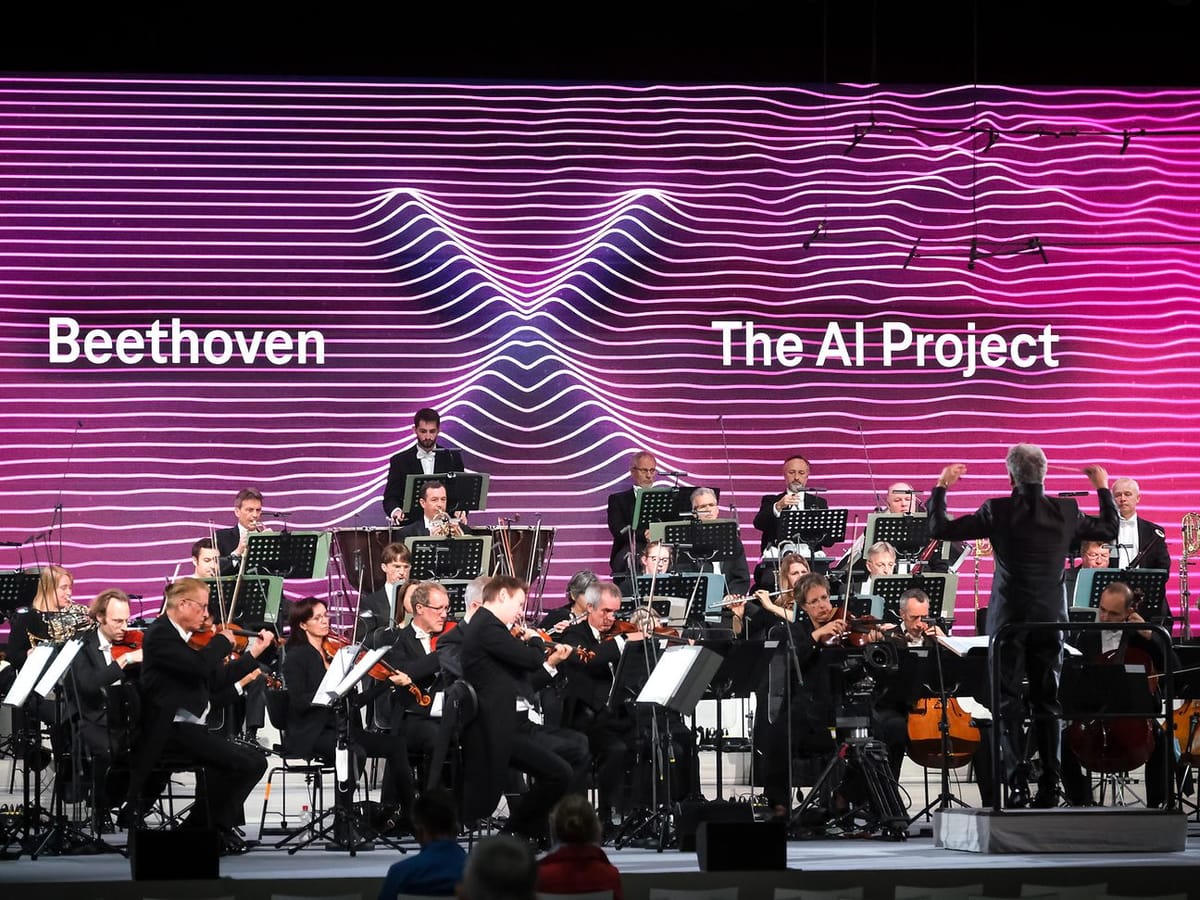Our Ode to Creativity: Why We Finished Beethoven’s 10th with AI
Our world is slowly coming out of the Industrial Age, but what’s next is not the age of technology, digitalization, or transhumanism. It’s the Age of Creativity!

By Seda and Matthias Röder
An extremely bold experiment initiated by Deutsche Telekom comes full circle. We just premiered Beethoven X, the composer’s unfinished symphony completed with the help of AI. This is a major step, not only for us as an organization, but also for humanity at large.
Immediately following the release, a discussion broke out about whether our AI produced emotional, “human” music, or just a cold wannabe of the original. But is that really the point? No.
What’s much more important is the emerging debate around what AI can and should do, the potential relationship between technology and humans, and how AI can help lower the barrier of entry into the ivory tower of creativity.
Technologies are advancing rapidly. Therefore, unleashing their potential for the greater good is, quite frankly, a pressing matter. We should, perhaps, be maximizing the creative potential in the world with much more urgency. Consider this: If you look at the numbers compiled by the Austrian Statistics Agency, you will see that we have only 0.02% of the entire world population working in any innovation and creativity-related field – R&D, environment, food, societal innovation, arts… you name it!
But can it truly be that only 2 out of 10,000 people are actually creative? Can it truly be that only 2 out of 10,000 people can contribute to innovation? Of course not!
We live in a world obsessed with not wasting resources, yet when it comes to human potential, we seem somewhat complacent. Considering our world’s current situation, we need all the help we can get to start asking different kinds of questions and exploring new pathways where old ones are failing. That is precisely where the power of human-machine interaction lies.
Our Beethoven AI gave us options… Options we could never have produced in such a timeframe. In so doing, it maximized our creativity. The options it so effortlessly produced were threefold. First, they expanded our horizons in that AI didn’t care about our conventions, taboos, or rules. Second, they gave us freedom, putting us in the driver’s seat with an amazing array of choices. Finally, they saved us tons of time which we could spend focusing on and learning about things that really matter. All of that is indeed “human” music to our ears.
If an AI can help humans be more creative, more “human” even, the question remains: why are we not employing this technology much more widely to address and solve other problems, too?
Perhaps the answer is that our age lacks courage. Business-as-usual mentality and fearing failure is omnipresent in our organisations. Many are reluctant to experiment with AI within the context of creativity. Or maybe the fear lies in the idea of a machine becoming a “more creative individual,” as if we were in competition.
Humans are not computers, nor should they be treated as such. Unfortunately, this is still the case; just observe your child’s homework sheet, and you’ll immediately know what we’re talking about. Our systems should be focusing more on raising first-class creative and collaborative thinkers, learners and inventors, rather than programming what are essentially second-class calculators.
Let’s accept the reality: Humans are not generally very good at reproducing Knowledge 101. Our memory capabilities and speed of data-processing are simply flawed in comparison with machines, but we excel at other things, particularly empathy and creativity. We are also extremely good at unleashing the potential of all sorts of tools around us: We invent tools to improve the lives of people we’ve never even met. We utilize tools all the time to inspire and connect with each other. Our Beethoven AI is one of them.
This is a turning point in history. Instead of asking whether someone is “allowed” to use AI in the creative process or to emulate the style of a creative superstar, we should be instilling the right mindset and the joy of experimentation to awaken the creative superstar inherent in everyone. It is high time we stop putting people into boxes only to later instruct them to think outside of the box!
As the debates and reflections around our Beethoven experiment unfold, we must begin acting on that promise.
Our world is slowly coming out of the Industrial Age, but what’s next is not the age of technology, digitalization, or transhumanism.
It’s the Age of Creativity!
Seda and Matthias Röder are founders of The Mindshift, an innovation & leadership consultancy. Furthermore, they are the founders of the Sonophilia Foundation, a German non-profit organisation devoted to supporting and disseminating the scientific research of creativity. Seda and Matthias live in Salzburg, Austria.